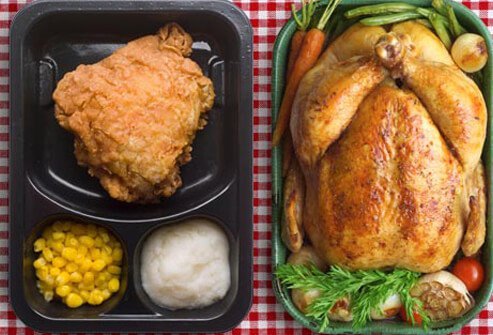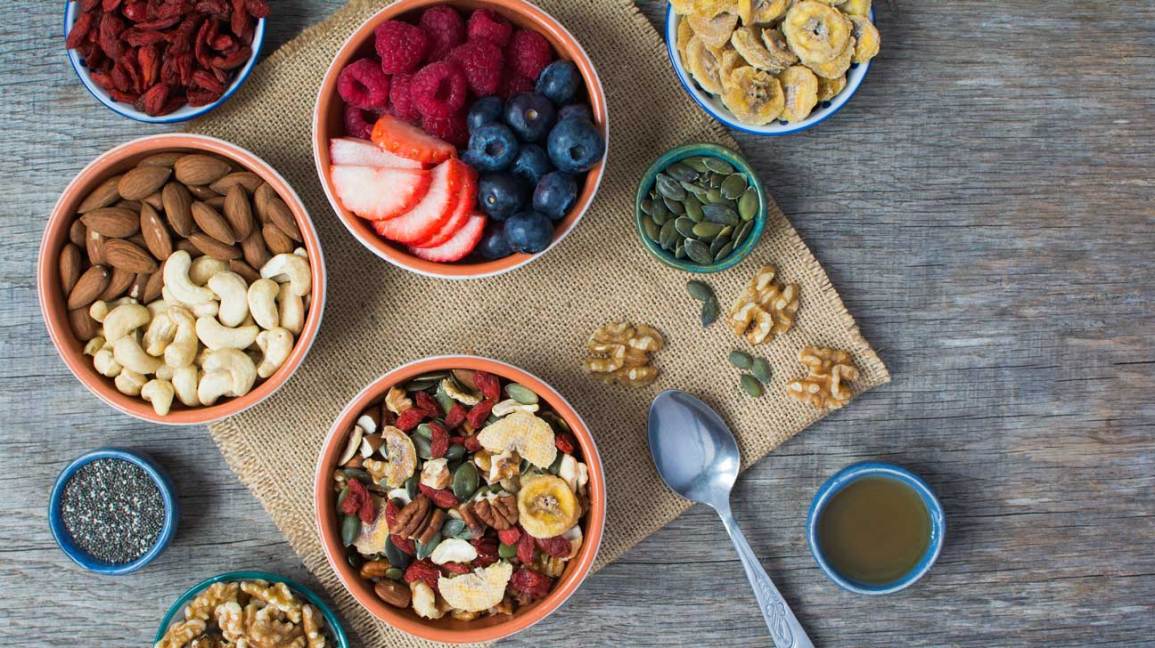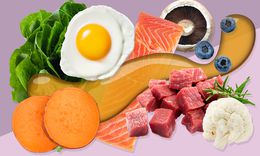
The menu diet paleo encourages us to eat the foods our ancestors enjoyed. This diet includes food such as apricots and dried pumpkin seeds. You can also eat sweet potatoes, chicken and other vegetables. Although the paleo diet may seem restrictive, EatingWell believes in the importance of certain foods. We'll show you how to eat them while maintaining a healthy diet.
Pola makanan, paleolithic manusia
Christina Warinner, Ph.D., studied pola makan manusia purba and mitos-mitos pola makanan paleolithic manusia in 2010. She claims that manusia Paleolithic manusia ate large amounts of daging as well as all types of meat. Although this myth was believed widely by paleolithic people it is now outdated and irrelevant.
The diet of paleo (also known as the diet manusia-gua) is a way to eat like what manusia.gua and other people used to eat. Their kesehatan is improved and they preserve their heritage. This diet is not suitable for all. This diet is not recommended for everyone.
The Ramasokat lukisan is composed of two types kelompokan: Ceruk and Lukisan Gua. They were cultivated in Liabalano as well as Sulawesi Tenggara. The lukisan gua includes a variety of proteins, carbohydrate, and amino acids. These nutrients support healthy living. They may also help us understand the details of human evolution.

Modern humans eat a variety of foods that have many benefits but also come with some risks. People who eat foods rich in nutrients, such as those found in the Paleolithic Era, will be more likely to develop diseases. Your risk of developing disease is reduced if you eat clean. Clean Eating is a diet that promotes healthy eating. The obvious benefits of this diet are clear: eating low in fats can have positive effects on your health. Also, you won't get sick if you eat too much.
Paleolithic diet: Foods allowed
Foods found in processed foods often contain added sugars, vegetable oil, and artificial sweeteners that can be harmful to your health. Salt and refined sugars are both factors that contribute to obesity and can cause heart disease. Vegetable oils are also controversial; the American Heart Association recommends safflower or corn oil as replacements for canola oil. These oils contain high levels of omega-6 fatty acids.
Many commercial paleo diets restrict dairy products to a minimum, while others have stricter restrictions. Lean pork loin, roasted chicken and onion stuffing with carrot stuffing and steamed broccoli are some of the foods that paleolithics can eat. Other paleo diets allow for small amounts maple syrup and honey. The benefits of this diet have been supported by scientific research at varying levels.
A common thing paleo fans suggest avoiding is legumes. These legumes contain high levels phytic Acid. These substances inhibit the absorption of essential minerals from the gut. They are allowed in certain cases. Even though it might be tempting to eat lentils and potatoes, you shouldn't add them to your diet as often or as frequently as you would with other processed foods. You should instead include lots of fruits, vegetables and other healthy foods in your daily meals.
Guidelines for eating a paleolithic meal
While the Guidelines for Eating the Paleolithic Diet differ from modern food, they both follow the same principles. The Paleolithic diet primarily consisted of animal products. But it's also rich in plant foods, so there aren't many limitations. It is important to remember that your genetic makeup may not allow you to eat this diet. Additionally, the increased meat consumption may be detrimental to your health. Paleolithic food is not for everyone.

Paleolithic diets exclude dairy products as the most common food group. These key food groups are at high risk for nutritional deficiencies. A deficiency or lack of calcium in your diet can lead tooth decay. This could have a negative impact on your teeth and bones. Calcium also plays a key role in blood Clotting and Muscle Contracting. Whole grains are also less likely to develop heart disease, stroke, or type 2 diabetes. However, because grains were largely eliminated, you may find yourself at risk for calcium deficiency.
Many principles are involved in Paleolithic-style eating. This diet emphasizes eating nutrients-rich foods such as vegetables and proteins and minimizes processed foods. You should follow these guidelines carefully to avoid going overboard. Keep in mind that every person will have a different paleolithic food plan. It is important for you to know that the Paleolithic Diet is based upon a lifestyle that was popular 10,000 to 12,000 Years ago.
FAQ
What is the average time it takes to learn how to cook? How much time do I need?
It depends on your level of skill. Some people can learn basic cooking techniques in as little as a week. Others might need months or even years to master basic cooking techniques.
The amount of time needed to learn to cook varies considerably based on the person. Someone who has never been to the kitchen before might need more time than someone who does it regularly. Different types of cooking require different amounts of experience. For instance, baking requires more knowledge than frying.
Focusing on a particular technique is the best way to speed up your cooking skills. You can then move on to the next technique once you have mastered it. You shouldn't stress about how long it takes to learn how cook. Just keep practicing and enjoy the process.
What are the basic skills of cooking?
Basic cooking skills include the ability to read recipes and measure ingredients. These are the essential skills you will need to be able cook for yourself. You can also save money by cooking at home.
Do I need any special equipment to cook?
To learn to cook, you don’t need to have any special equipment. However, having the right tools can make cooking easier. To make pasta easier, you can use a knife to cut the pasta and a whisk to whip up egg whites to stiff peaks. Having the right tools can make cooking less daunting and allow you to get started faster.
Statistics
- In the United States, the category is estimated at $23.2 billion annually and is growing faster than the market. (washingtonpost.com)
- On average, chefs earn $58,740 a year, according to the BLS. - learnhowtobecome.org
- The median pay for a chef or head cook is $53,380 per year or $25.66/hour, according to the U.S. Bureau of Labor Statistics (BLS). (learnhowtobecome.org)
External Links
How To
How to make the perfect omelet
Omelets have always been a favourite food to eat for breakfast. How can you make them perfectly? I've tried many recipes and different methods but none have worked. Today, I'd like to share some tips with you in order to make delicious and fluffy omelets every day.
Before we start making omelets, let's remember that eggs are temperamental. It is important that eggs are fresh from an organic market and kept cool until used. If you don't keep them cold enough, the whites won't form properly, and the yolks will break down too much and become runny. This will make your omelets appear strangely colored. If you intend to cook your eggs immediately, it's best to use room-temperature egg.
You can also separate the egg before you add it to the pan. It is important not to allow any white to mix with the yolk as this could lead to the omelet becoming curdled.
You might burn the bottom of the egg if you place the egg directly on the stovetop. This could ruin the texture of your omelet. Instead, heat the egg for 10 seconds in the microwave before placing it in the pan. The microwave heat is sufficient to cook the egg without overcooking.
Next, let us talk about how to mix the eggs. You want to mix the eggs thoroughly before you add them. To do this, take the bowl from the mixer and flip it upside-down. Next, shake the bowl vigorously. By doing this, the egg is thoroughly mixed with the air in the bowl.
Now it's time to have fun: pour the milk into the mixture. Mix half of the milk with the eggs. Then fold the eggs in half into the remaining milk. Don't worry if there are still streaks of egg visible; these streaks will disappear once you flip the omelet.
After folding the eggs, place the pan on medium heat and wait for the oil to start sizzling. Once the oil begins to heat, add 1/4 cup butter and swirl the pan to coat it. Next, carefully open the lid and sprinkle salt into your pan. The salt will help to prevent the omelet's sticking to the pan.
Once the omelet has formed completely, cover the pan and let it set for a few minutes. Flip the omelet by using a spatula. Cook the other side for about a minute. Serve immediately after removing the omelet from its pan.
This recipe is best when used with whole milk. But, you can use skimmed milk as well.